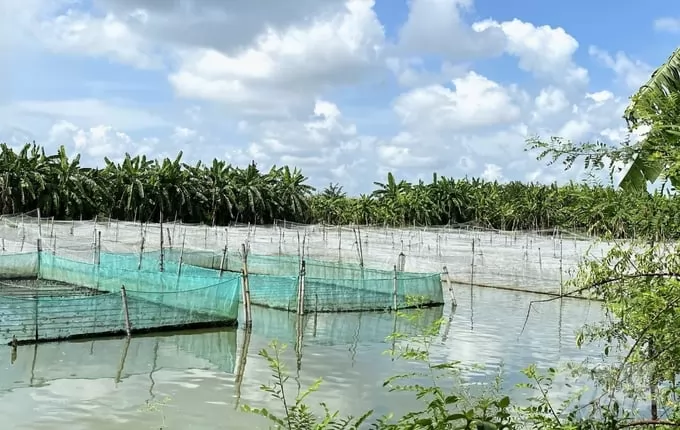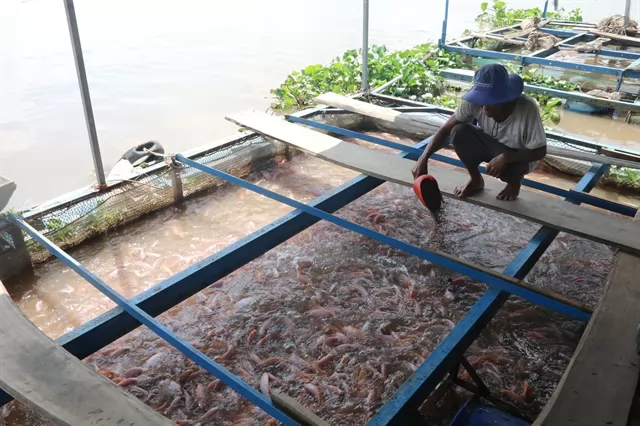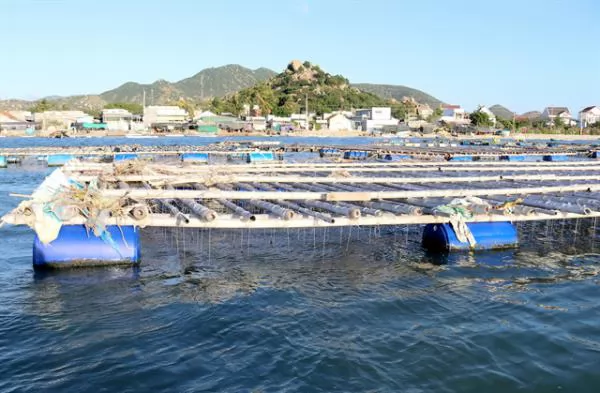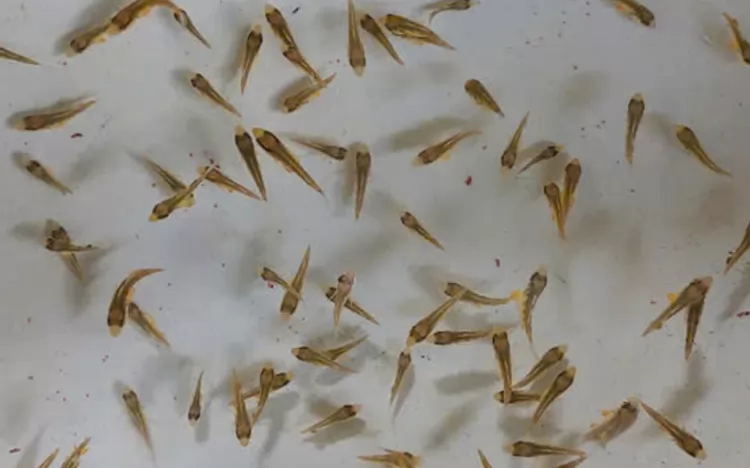Frog farming struggles due to breed degradation and contamination

The frog - fish farming model not only ensures environmental hygiene in ponds but also increases income for farmers. Photo: Kieu Trang.
(VAN) Frogs raised in Thap Muoi district, Dong Thap province show signs of low productivity and poor disease resistance because of degraded farming areas.
Making a trip to the Dong Thap Muoi area, the land of pink lotus, the “capital” of frog farming, I have a chance to listen to some profession stories from two key figures of the frog farming model in Thap Muoi district, Dong Thap province. They are Lu Dong Tan, a famous frog farmer in the area, and Nguyen Minh Khoa, Deputy Head of the Technical Department of Thap Muoi District Agricultural Extension Center, who has accompanied frog farmers for more than 10 years.
“A few years ago, people of Thap Muoi built houses and bought cars thanks to this frog farming job. Getting a profit of billions of VND a year was no big deal,” Tan said.
What makes frog farming in Thap Muoi unique is that frogs are raised using cages in ponds combined with a fish farming model. The main food source of fish is leftover food from frogs, moss clinging to the cages and some other by-products from frogs such as feces and peeled frog skin. Farmers save money on fish food while ensuring the quality of the pond environment.
Feed prices have increased in recent times, and frogs are more susceptible to diseases, leading to high farming costs. According to Tan, the price of antibiotics has increased by 10 - 15%, and feed prices are also fluctuating every day.
The size of meat frogs is getting smaller and smaller, leading to low productivity and low disease resistance. Frogs are susceptible to bloat, dysentery, blindness syndrome, torticollis, liver and kidney pus. The most dangerous is the red leg disease because it progresses very quickly. If not detected promptly, it will spread and kill the entire pond in just around 7 days.
If it was in the past, 10,000 well-developed frogs could produce approximately 1,200 kg of meat. Now the output of frog meat ranges from 500 to 700 kg. According to Tan’s estimation, the total input cost to raise 10,000 frogs is at least VND 34 million. After more than two months of raising, if the weight of frog meat only totals 500 - 700 kg, even when the price is high at approximately VND 42,000/kg, he would still lose VND 5 - 8 million. The good thing is that Tan raises frog and fish at the same time, so he can make up for the losses. After 4 crops of frog, he can harvest 3 - 4 tons of fish, gaining a profit of VND 40 - 50 million.

Farmers harvest perch from frog ponds. Photo: Kieu Trang.
Vo Minh Canh's household in My An town (Thap Muoi district) also falls into a similar situation. “This year, the price of feed increased, the wastage rate in the early stages of stocking was high, diseases were rampant, and productivity was low, so farmers are unable to make a decent profit,” said Canh.
Water quality is a decisive factor in the development of frogs, but the water environment in the Thap Muoi area has been polluted due to long-term farming, which results in slow development and poor disease resistance.
Regarding this issue, Deputy Head Nguyen Minh Khoa says that the current source of frog seeds provided to farmers is created through breeding rotation. Many nurseries also perform inbreeding for long periods of time, leading to breed degeneration. Combined with a polluted water environment, frog farming models gradually show low productivity and high loss rates.

The situation of breed degeneration combined with the polluted water environment at present results in low productivity and poor disease resistance in frogs. Photo: Kieu Trang.
To improve productivity, farmers need to pay attention to preventing diseases in frogs by disinfecting and cleaning the pond before stocking. They can take advantage of 1/3 of the water pond area to have water hyacinth and create a biological filter system.
The most appropriate density of frogs is 7,000 - 8,000 frogs per 40 m x 10 m cage. The most important thing is to ensure the water quality in the pond is clean by changing the water twice a day. Applying the frog - fish farming model is also an effective solution to ensure water quality in ponds. Fishes eat frog leftovers, frog by-products and moss. They limit the growth of algae and disease-causing bacteria.
Author: Kieu Trang
Translated by Samuel Pham
Maybe you are interested

Tiền Giang develops aquaculture
Tiền Giang Province is promoting aquaculture by teaching farmers breeding techniques and encouraging them to use advanced techniques using intensive methods.

Ninh Thuận boosts development of marine aquaculture
Farmers in Ninh Thuận Province have expanded the breeding of marine aquatic species, such as Pacific oysters in floating cages in Nại Lagoon in Ninh Hải District.

Vietnam becomes first nation to successfully breed high-value amberjack
Vietnam has become the first country in the world to successfully breed the prized amberjack, a breakthrough achievement with significant implications for the nation's aquaculture industry and the global seafood market.





